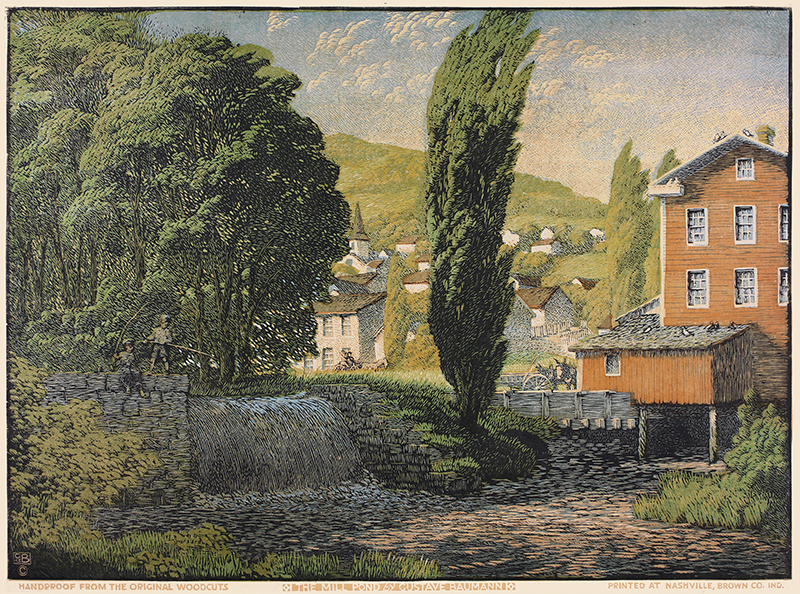
19th, 20th & 21st Century Fine Prints
707-546-7352 · fax 707-546-7924 · web: www.annexgalleries.com · email: artannex@aol.com
The Mill Pond by Gustave Baumann

The Mill Pond
Gustave Baumann
The Mill Pond
Gustave Baumann
1881 - 1971 (biography)"The Mill Pond" is a large color woodcut, done in 1913. This woodcut was block signed, titled, and annotated - using separate blocks - "Handproof from the Original Woodcuts" and "Printed at Nashville, Brown County Ind." by the artist in the lower margin, beneath the image. The image is block initialed and dated "GB -13" and "©" in the lower left image. The large image, which measures 25-1/2 x 34" was carved and printed using 6 separate blocks by the artist in 20 recorded impressions on a sheet of cream wove Kyokushi Japanese paper that measures 25-7/8 x 35". The reference for this image is Chamberlain 33. This impression is illustrated in figure 33.2 on page 172 of 'In a Modern Rendering: The Woodcuts of Gustave Baumann'.
Gustave Baumann printed a few prints in the Japanese method, using water-based inks and printed using a baren, the editioned prints were printed using a press.
The Mill Pond was included in an exhibition at the Palette and Chisel Club (the second oldest artists' organization in the USA), in Chicago in April 1913, but Baumann re-cut one or more of this blocks in the fall. A photograph in the Baumann archive shows the artist carving one of the blocks for The Mill Pond and, on the wall of his studio, a calendar for the month of September 1913. The Mill Pond was the last in the series of large-format prints of Brown County and is the largest color print made from wood that anyone had made up to that point.
According to Martin Krause, curator emeritus at the Indianapolis Museum of Art at Newfields, this is a reversed view of Benjamin Cox's gristmill at the junction of Salt and Greasy Creeks southeast of Nashville. The gristmill burned down while Baumann was living in Nashville but not before his friend and fellow artist Will Vawter painted it.
